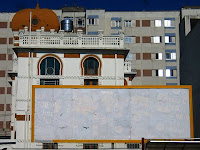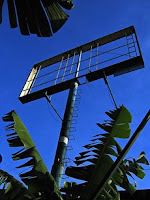So here it is, deadline day. And now time to reflect...
I hope to think i have fulfilled all the requirements for this module.
BA (Hons.) GRAPHIC DESIGN – END OF MODULE SELF-EVALUATION
Hannah Lloyd.
Level 02 Semester 01 Credit Value 20
1. What skills have you developed through this module and how effectively do you think you have applied them?
I have developed organisational skills in this module I think. Previously I was quite disorganized with presenting my work when it came to submission. I hope that I have improved on this.
Within the module, I have learnt skills in many print processes. Particularly about preparing documents for lithography printing, which I looked closely when, producing the vouchers (good brief) by researching into the printing company “printing.com.”
At the start of this module, for the good brief, I found that I struggled to try and explain my idea, and was told to improve my communication skills! I hope that I have improved on this now, and have started preparing for Crits more, already knowing what I am going to say and show to the group. This also allows for me to gain better feedback from Crits, greatly improving the development of my work. The requirement of presenting A2 boards I think helped to bring my idea together, and this is something I will continue to do throughout the rest of my projects.
I have learnt the things to consider when preparing documents to be sent to print in industry, to consider the cost, the stock, the most appropriate method.
2. What approaches to generating work and solutions to problems have you developed and how have they helped?
I have developed my conceptual skills a lot, thinking through every decision, and the reasons behind every decision. I have stared to make decisions quicker, although I change my mind within my idea too much when it came to deciding on the final deliverables. I have started to develop my ideas more through primary research such as collecting retails graphics. Also doing paper based designs before jumping onto the computer, I looked at existing retail design out there, and this helped me to progress through to my own idea. I also asked around shops to collect envelopes for receipts, this gave e some quite useful primary research, even though I decided not to use this in my final deliverables, the process of going out and talking to shop assistants gave inspiration and ideas.
3. What strengths can you identify in your work and how have/will you capitalise on these?
Starting with the design4print brief, I think that the strengths within my work is the development. I found this just came naturally when designing, I would consider different variations before finalising my idea.
I think the branding of my work – gratis, is quite strong. And I enjoyed the process of conceptualising and pushing the message. I think you can see a clear development of this.
The strongest part of this design4print brief I think is the concept, as I have a reason for all the parts of my package. The bag –refers to shopping and spending money, The voucher – refers to offers and money, The Card – refers to a credit card. And the reason for having everything relating to money is because, nothing in life is free, it may be free from money, but there is always a price to pay.
I also think the research I did from printing.com was quite extensive, including sending off for a package to receive samples, going in and talking to them personally, and working to their requirements for size etc.
4. What weaknesses can you identify in your work and how could you exploit these more fully?
I don’t think I fully exploited the use of printing methods. The bag should have been done through screen print, but by the time I had made this design decision, it was too late and I did not have enough time. I used transfer paper to represent my idea, and imposed design onto the bag using Photoshop, but I wish I could have actually got the design screen-printed.
I started to change my idea quite a lot when it came to deciding on deliverables, I think that I need to be more decisive as this is why I ran out of time to screen print.
I could have done some more extensive primary research, I did go out and talk to shop assistants, but maybe have got more research or opinions from my audience, art and design students.
5. Identify five things that you will do different next time and what do you expect to gain from doing these
1. Be quicker with my decisions within my idea, so that i have more time to produce everything that i want to produce.
2. Improve time management, so that I have time to create or do everything that I want to.
3. More Artist Research to influence my idea.
4. More extensive Primary research, go a bit further than just collecting. Interviews with audience, to allow for more inspiration and ideas.
6.How would you grade yourself on the following areas:
(please indicate using an ‘x’)
5= excellent, 4 = very good, 3 = good, 2 = average, 1 = poor
Attendance 3
Punctuality 4
Motivation 3
Commitment 3
Quantity of work produced 3
Quality of work produced 3
Contribution to the group 3
















